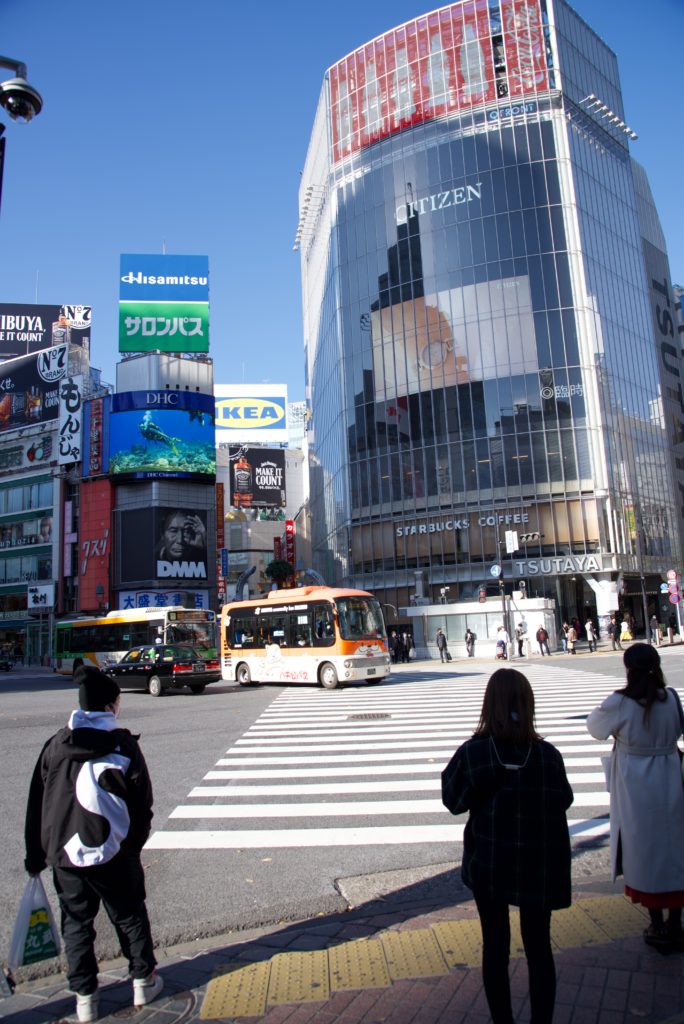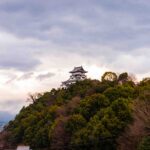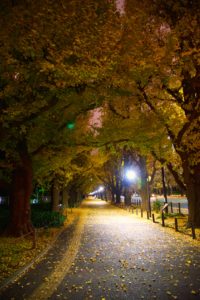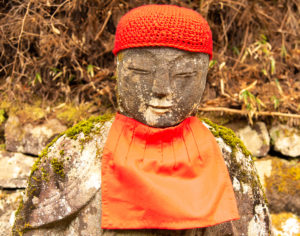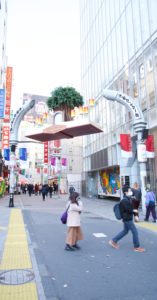
Shibuya tries to be the Times Square of Tokyo, albeit on a smaller scale. It is known for it rowdy Halloween parties, New Year Countdowns or celebrations when the Japan soccer and recently rugby teams win big.
It is a bustling hive televised daily across news channels, the scramble crossing viewed eternally. The one word to describe Shibuya is ‘Young’. It is walking distance from the Harajuku area with its bizarre fashions on the Takeshita street. Shibuya is young but less bizarre.
The Shibuya Centre Gai, not only cuts through the heart of Shibuya, it defines, albeit in a long winded way, what Shibuya is all about.
When you get down at the Shibuya station, if you are in the JR line, coming out of the Hachiko entrance, going beyond the waiting crowds in front of the green carriages situated in front of it, looking over towards the much looked at crossing, beamed daily over television, waiting for the pedestrian lights to turn green, negotiating the crowds walking in all directions, diagonal, straight, or not walking but standing in the middle and taking photographs, once you’ve managed to get beyond all this, you come and stand in front of Tsutaya, below the Starbucks.
In the olden days, the days before Covid pandemic, are the olden days, there used to be thousands of tourists crowding all parts of Shibuya. The Shibuya scramble was a wild mass of humanity, interrupted briefly when lights turned red to turn back into chaos again, at green.
There have been quite a few stunts pulled at the crossing, including one where they futon mattress was placed at the center as a YouTube prank . Apparently those involves in the prank were jailed and are set to face courts for their punishment . More recently someone crossed the Scramble in an inflatable ball.
There are a few Starbucks scattered across Shibuya, but the one above Tsutaya in front of the scramble is possibly the best known one in Japan. In the early 2010s it was possible to buy a coffee, climb the stairs to the 2nd floor setting and grab a seat by the windows overlooking the scramble.
But as the tourists increased that became increasingly difficult. But Covid has reduced the crowds and one can easily find a seat, even one facing the window during mornings and afternoon.
The lane next to the Starbucks, impossible to ignore, the crowds get pulled in to it, is called Shibuya Center Gai, or Shibuya Center Street. A quick search on the internet tells me that this street was renamed as Basketball Street, however the signboards still see Center Gai.
It probably is an exaggeration to call it the heart of Shibuya today, but up until the early part of this decade this street, stretching from the crossing at Koendori and ending at Yumeji Dori, was the center of Shibuya.
Flashy malls, big retail outlets around Shibuya station have limited the appeal of the street, but the visitor rarely passes the joy of a walk through an old street filled with young people.
There is an arch at the entrance, with Tokyo 2020 banners fluttering forgotten and sad. The glory that was to befall Tokyo with the olympics has deserted it, there is an uncertain hope for 2021. But the banners still flutter in the wind and it is hard not to wince when one looks at it.
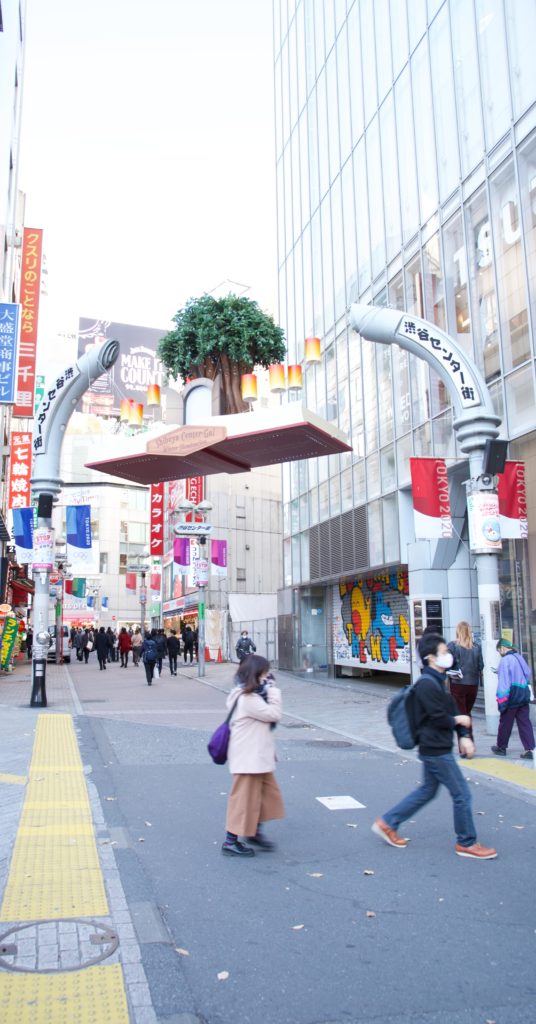
A foreign exchange shop has a loud banner on the left , still standing in hope for better times near the Italian restaurant known as Miami Garden.
A cosmetics shop called It’s a Demo divides the center gai into two diagonal lanes. The lack of tourists is clearly visible in the sparsely crowded street. There are a few people out shopping, others on lunch break and the usual gaggle of school girls.

The mornings begin late in this street, it is not until the school girls, either playing hooky or having finished school, start to hang-out in the road, that life pours into the street. In the morning hours, even at 11:00, the crowds are sparse enough to show the shops selling jewellery, not the real one but artificial, rings, buckles and caps, in shades of black and metal, to hang out of ears, noses, tongues or any other part the newer generation can think of.
The shops carry names like Doggy Bag, incomprehensible to those who try to make sense out it, but to those who intend to buy irrelevant. But there are no buyers at this early hour, only curious tourists, or people like me with time to kill.
The staff in the shops look on disinterestedly, knowing the chances of making a sale at this hour are dim, the real buyers are yet to arrive. So the staff in their platform heels, tight bottom hugging jeans, almost wrapped around this thin bottoms, do what they would not dare to do any other time in the day, ignore you.
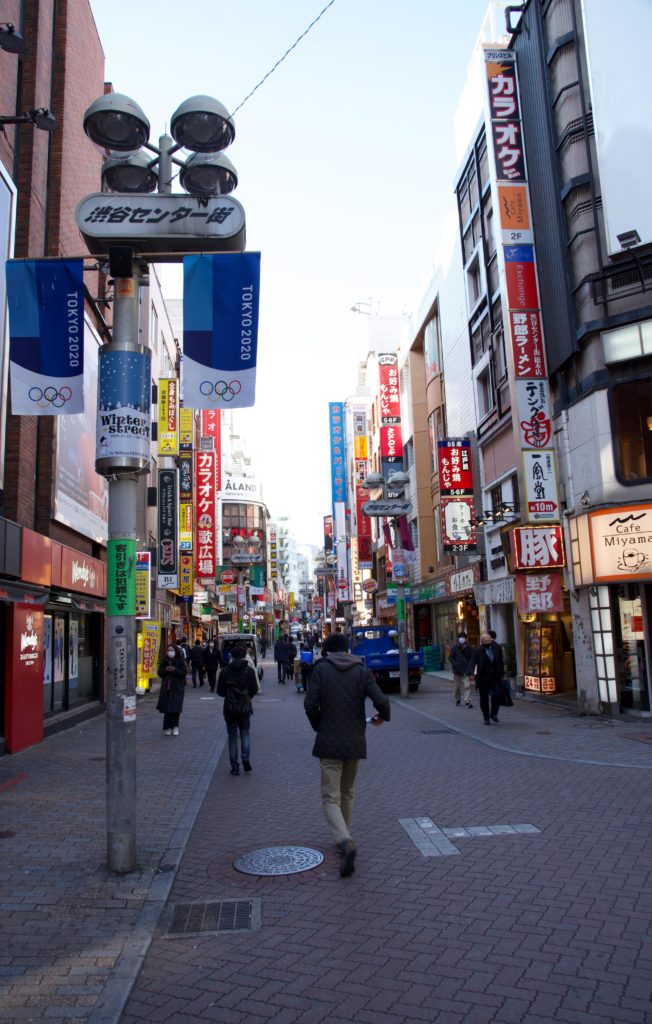
The shoe stores come in next, branded stores with their year-round sales, the banners festooned outside the shops, inviting those looking for bargains. The young people who crowd these streets are price conscious, spending every spare yen for than one fashion statement
which will not make them stand out, but give a belonging to the class which they aspire to join.
The fast-food shops come in next, with their half price burgers, or the discount day-of-the week sets. There are 3 of the more popular burger shops within 200 metres, and they will all be full , at all times of the day, well most, 11 AM is too early for people to be munching
fried meat. The Japanese, Chinese and Korean food shops follow suit, not reducing their prices enough to match the burger shops, but still trying their hardest, giving 50 something yen prices, which play on the mind with false assurances of cheapness. There is a ‘Ghetto Dining’ tucked somewhere in the crowded building, the outlandish name probably a desperately attempt to stand out from the McDonalds, Burger Kings and Sukiyas, begging to be recognized as different from the fast food joints.
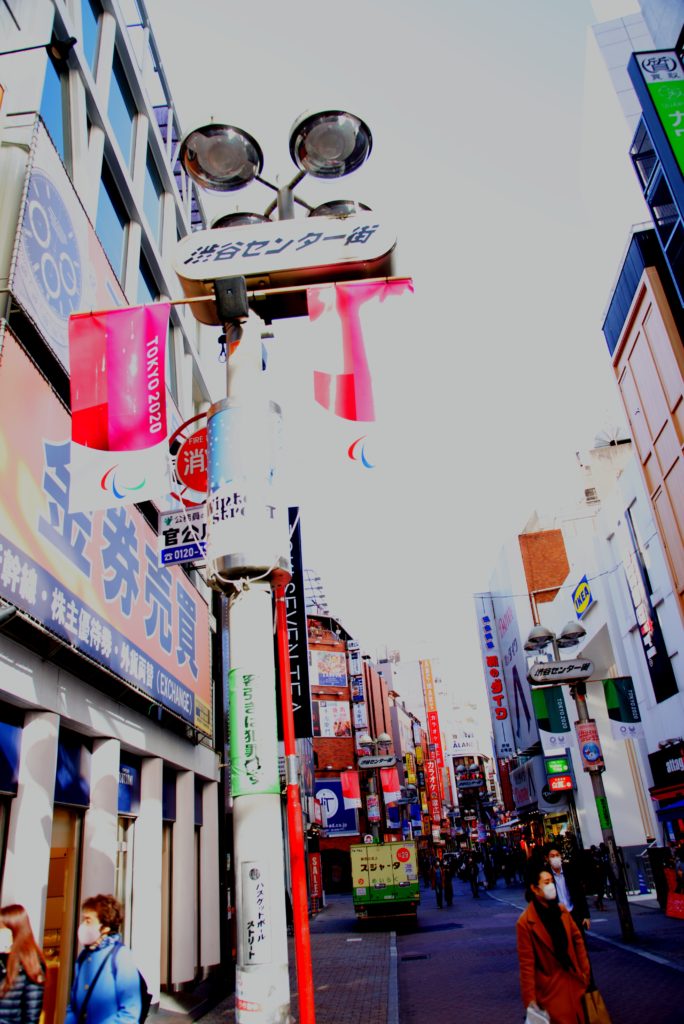
The Aldergate, a pub frequented by the Tokyo expat crowd stands quiet on the right. There is an excess of drinking options on this street and the Aldergate is probably well known amongst the target customers to see the need for advertising.
A Kebab shop and McDonalds decorate the corners of the street. The Kebab shop defiantly garish, probably in hope and more in bravado, a reminder to check out the street in another few months.
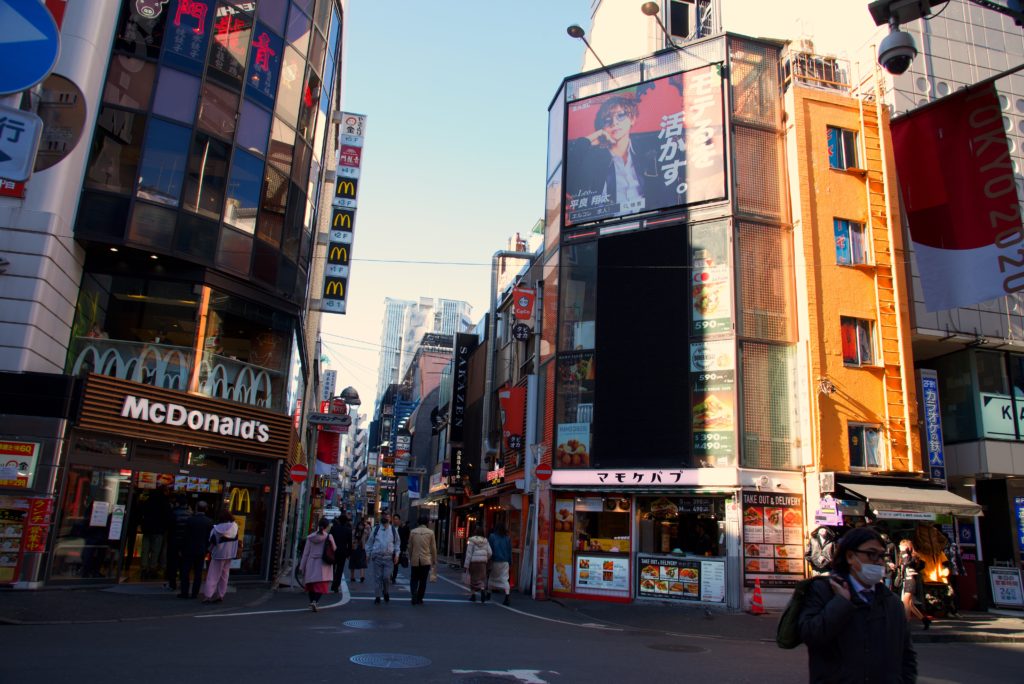
The life in the street is graded based on the distance from the Shibuya crossing, the liveliness tempering down as we go further down into the street. When you go past the McDonalds crossing, the liveliest part of the street has passed. The shops or the people who man them realize that buyers are not going walk in.
In the olden days there were touts standing in the middle of the street, soliciting customers aggressively. Apparently, the law, soliciting cusps illegal, or the burdens of a bad economy have removed the touts.
The touts would tap customers on the shoulders, catching their hands and dragging them to the shops, but in a limited contact world, deliberate , non essential physical contact is obviously not tolerated.
The street ends with an Avalanche Gold jewelry and an Ikinari steak on either side. A fast food steak restaurant facing a jewelry shop named to represent excess is incongruent, but breaking patterns is what this street is all about.
The T junction that ends the street has a Tsuruha drug store, proudly advertising that it is open 24 hours. Tourists at their peak might require medicines or cosmetics at midnight but the demand might be limited today. The same building has an Australian Steak restaurant, The Outback on the 2nd floor.
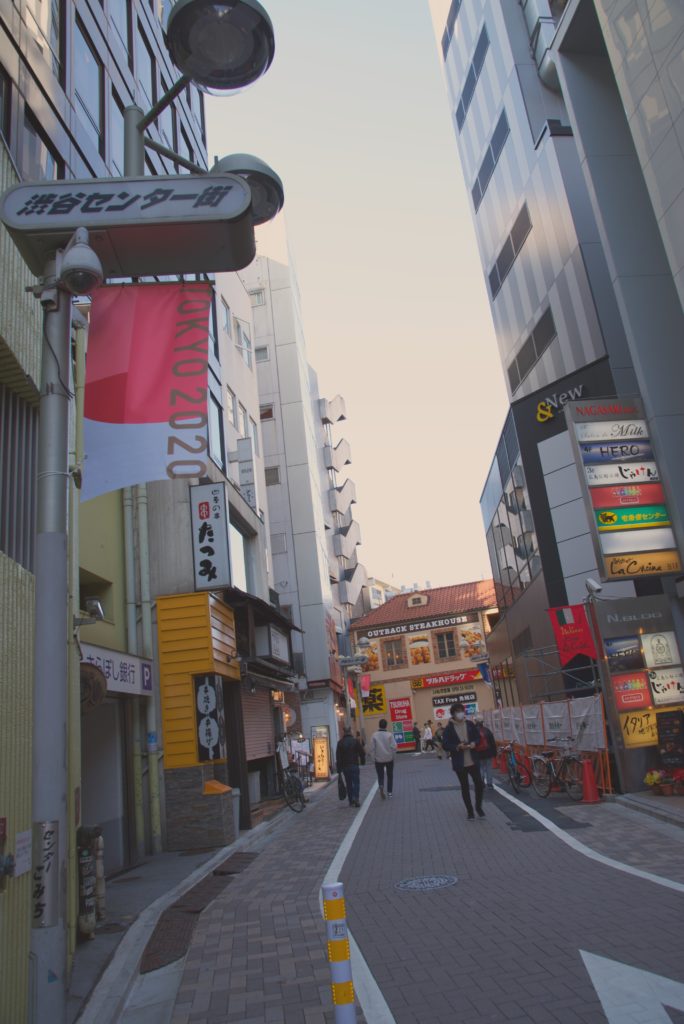
The end of the street is quieter and leads to the Udagawa area, a place where I used to have an office at one time. I need to go inside to check whether the Business Center where I used to have a desk still exists and am too lazy to try it.
The economy might have taken toll on a the few small businesses that used to operate out of that office and I do not need to be reminded of the times we live in, again!

